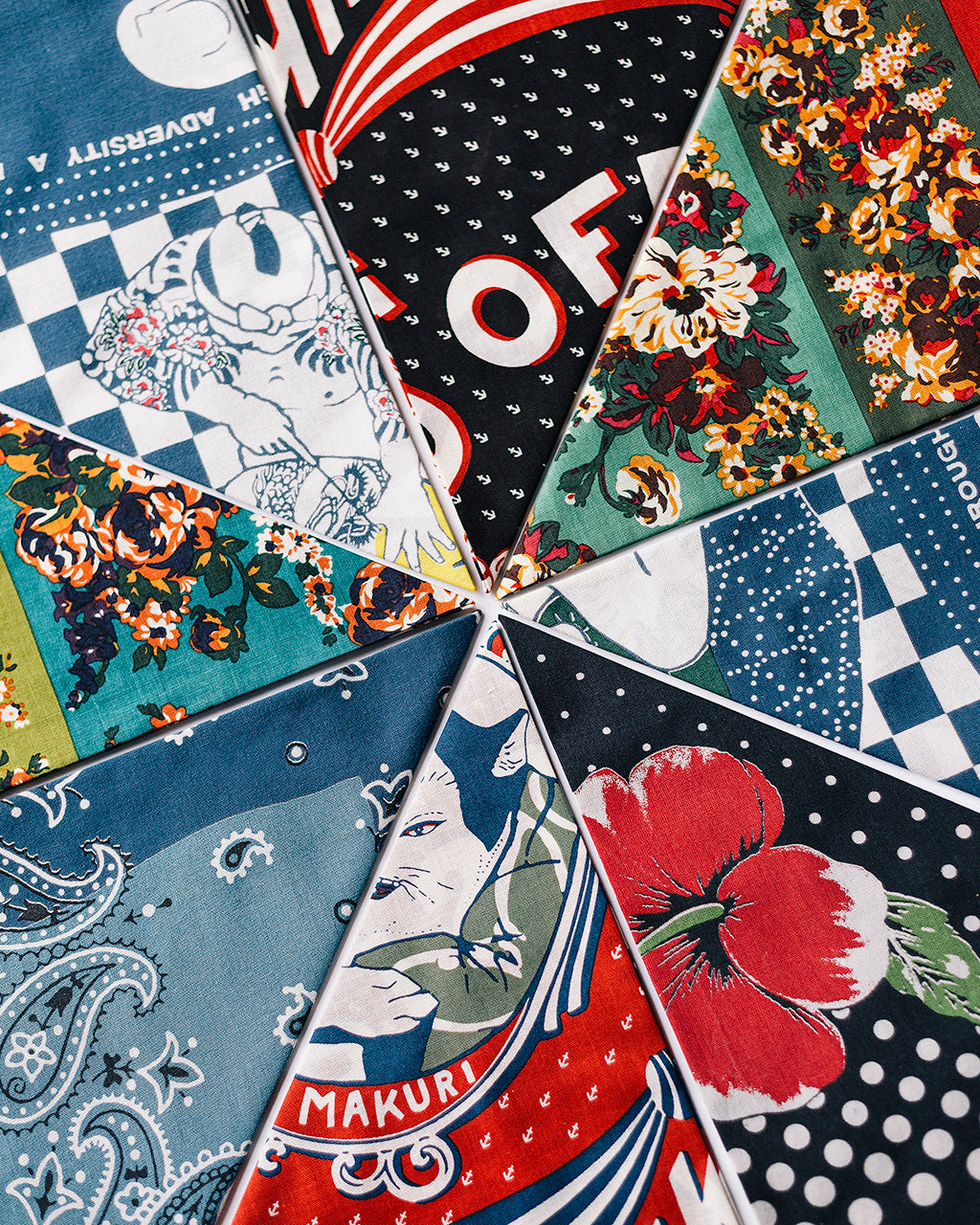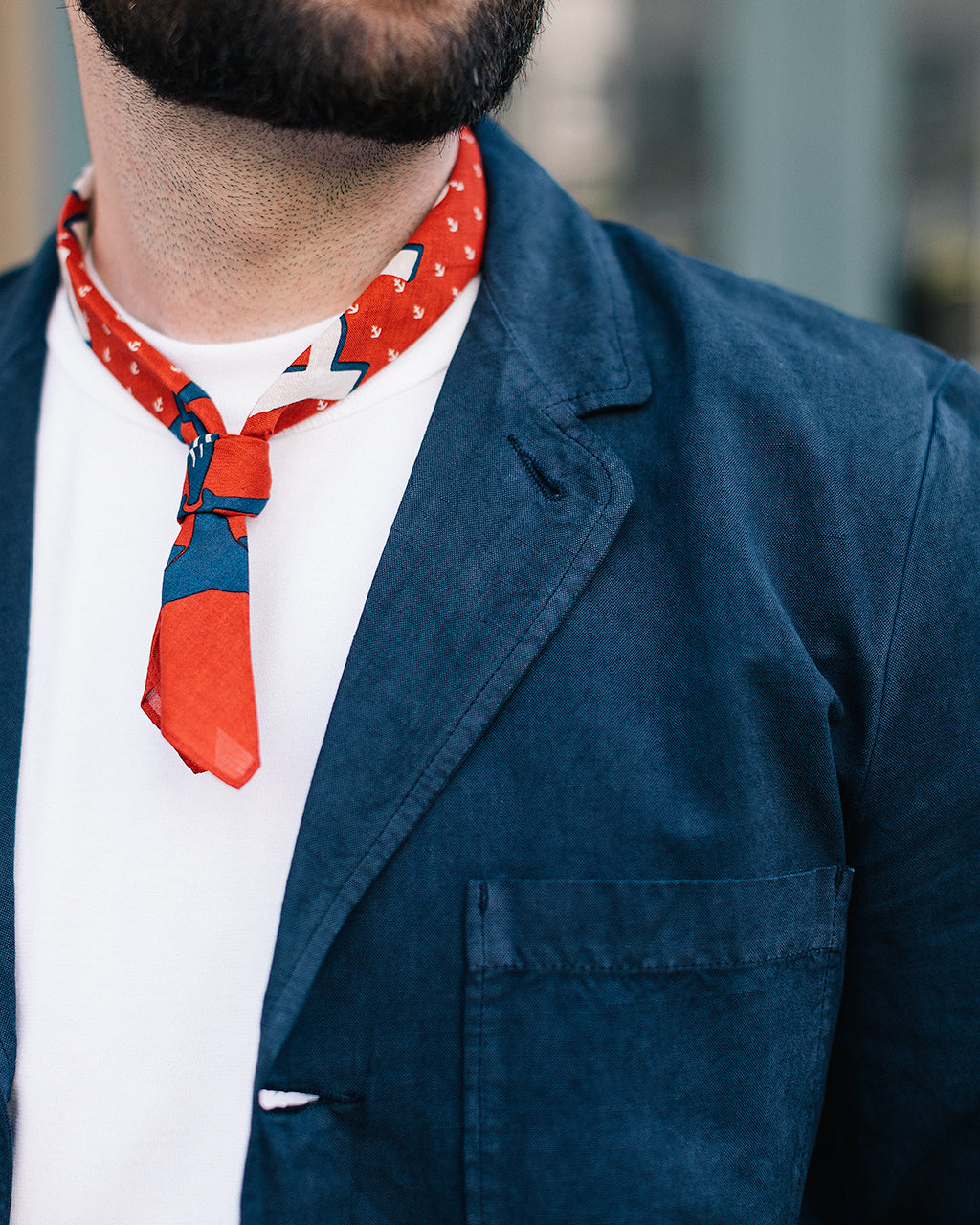
The bandana, a versatile piece of cloth, has a rich and varied history that spans cultures, continents, and centuries. Originally used for practical purposes, bandanas have evolved to become a symbol of fashion, identity, and political expression.
The term "bandana" is believed to derive from the Hindi word "bandhna," which means "to tie." This etymology hints at the origins of the bandana in South Asia, where it was used as a handkerchief or head covering. The intricate dyeing technique known as "bandhani," a traditional tie-dye process, was prevalent in regions like Rajasthan and Gujarat in India. These early bandanas featured vibrant patterns and were often made from cotton or silk.
Bandanas made their way to Europe in the 18th century through trade. Colonial merchants brought these colourful textiles back from India, where they quickly became popular among the European aristocracy. The fabric’s versatility and bright colours made it a fashionable accessory. In the United States, bandanas were also influenced by the Spanish word "paño," meaning cloth, reflecting their wide-ranging cultural impact.
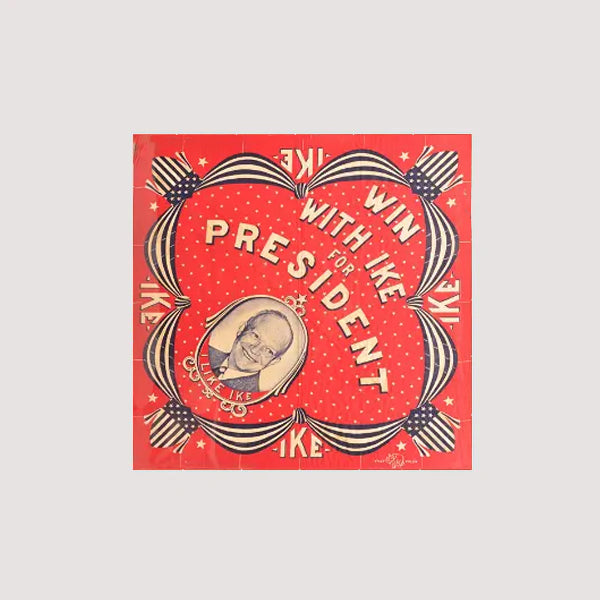
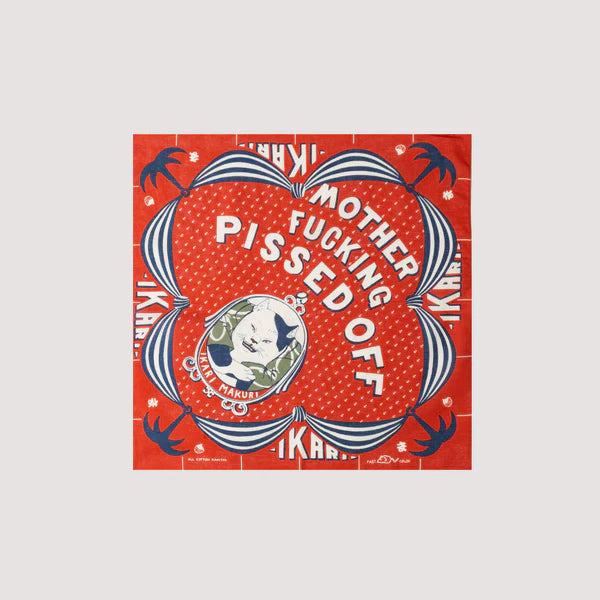
Above : "Win with Ike for President" campaign bandana from 1952 and Kapital's iconic Ikarimkuri Bandana referencing a similar design and concept.
In the 19th century, bandanas became particularly prominent in the American West. Cowboys and miners used bandanas for a variety of practical purposes: as dust masks, headbands, or neckerchiefs to protect against the harsh sun and wind. The bandana's utilitarian value was unmatched, making it an essential item in the rugged life of the American frontier.
Bandanas have also played significant roles in political and social movements. In the late 19th and early 20th centuries, labor unions and socialist groups used red bandanas as symbols of solidarity and resistance. During the Mexican Revolution, revolutionaries like Pancho Villa were often depicted wearing bandanas, symbolizing their defiance and rugged individualism.
In contemporary times, the bandana remains a versatile accessory. It is seen on fashion runways, in streetwear, and continues to serve practical purposes. The bandana also carries social and cultural connotations, from gang affiliations to political movements, showing its enduring significance and adaptability.
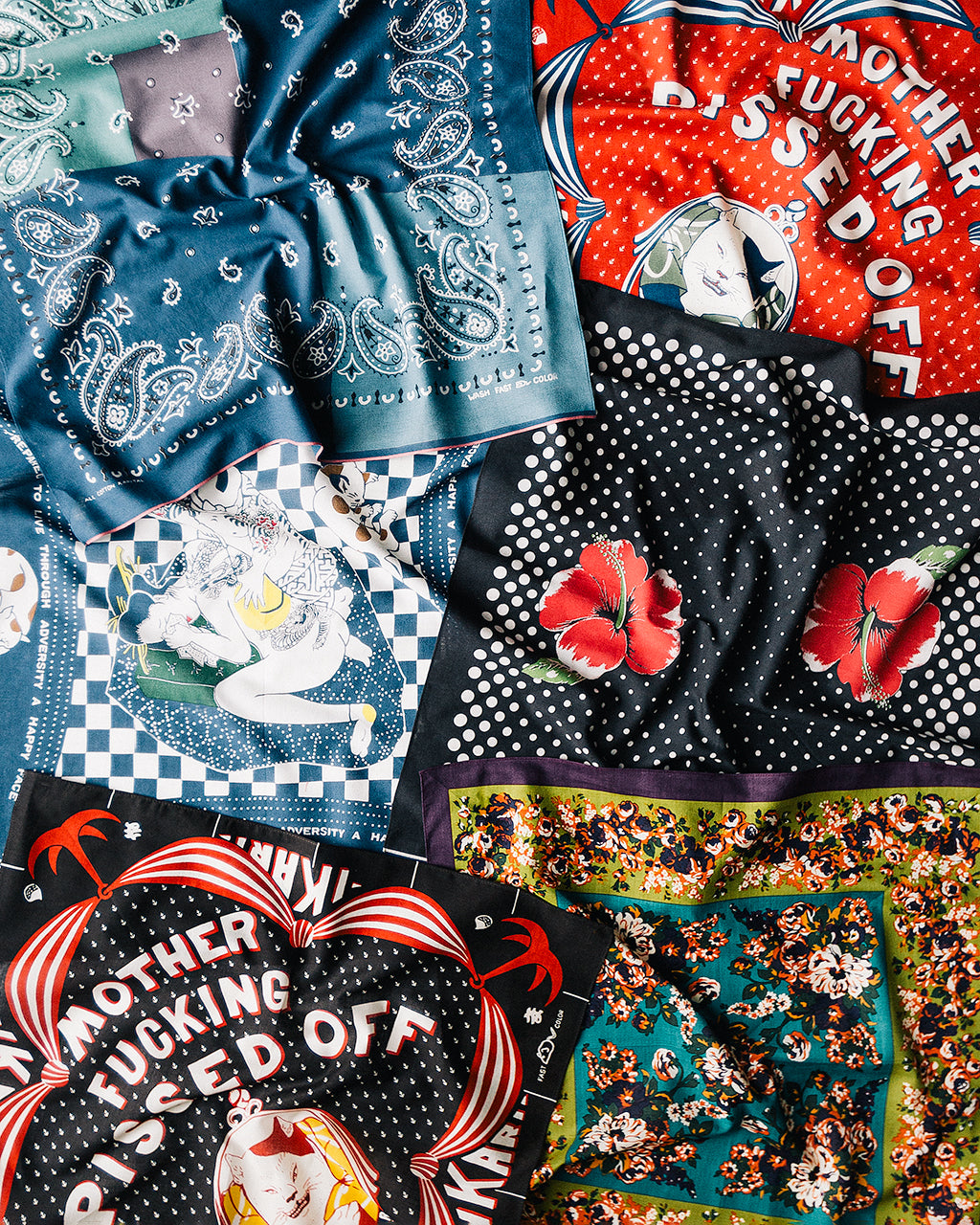
HOW TO TIE A BANDANA:
Starting off with the basics, grab your iron and steam your bandana flat and crease free. Begin to fold the bandana as slim as you require. Steaming as you go will help to create crisp folds and achieve a nice flat bandana.
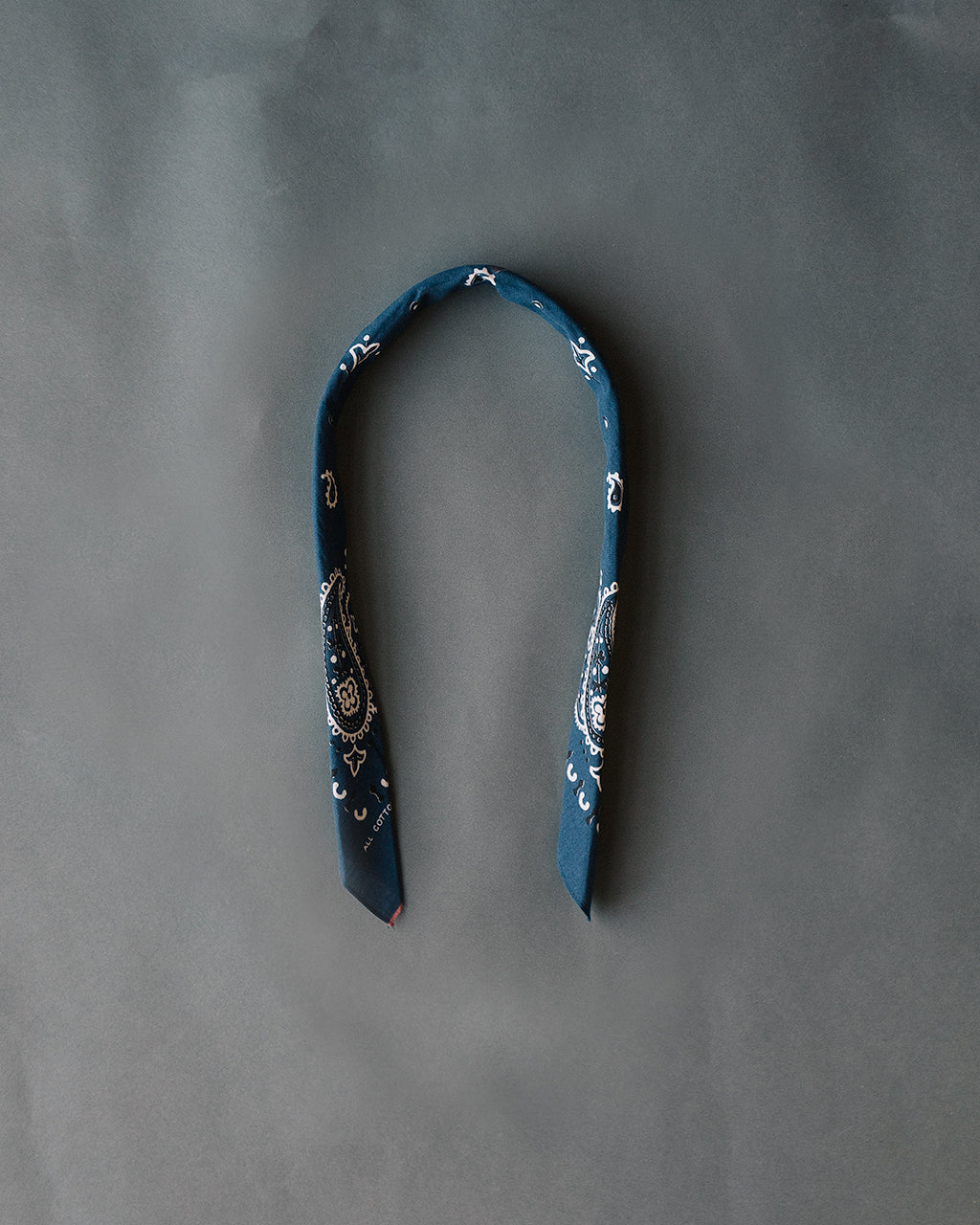
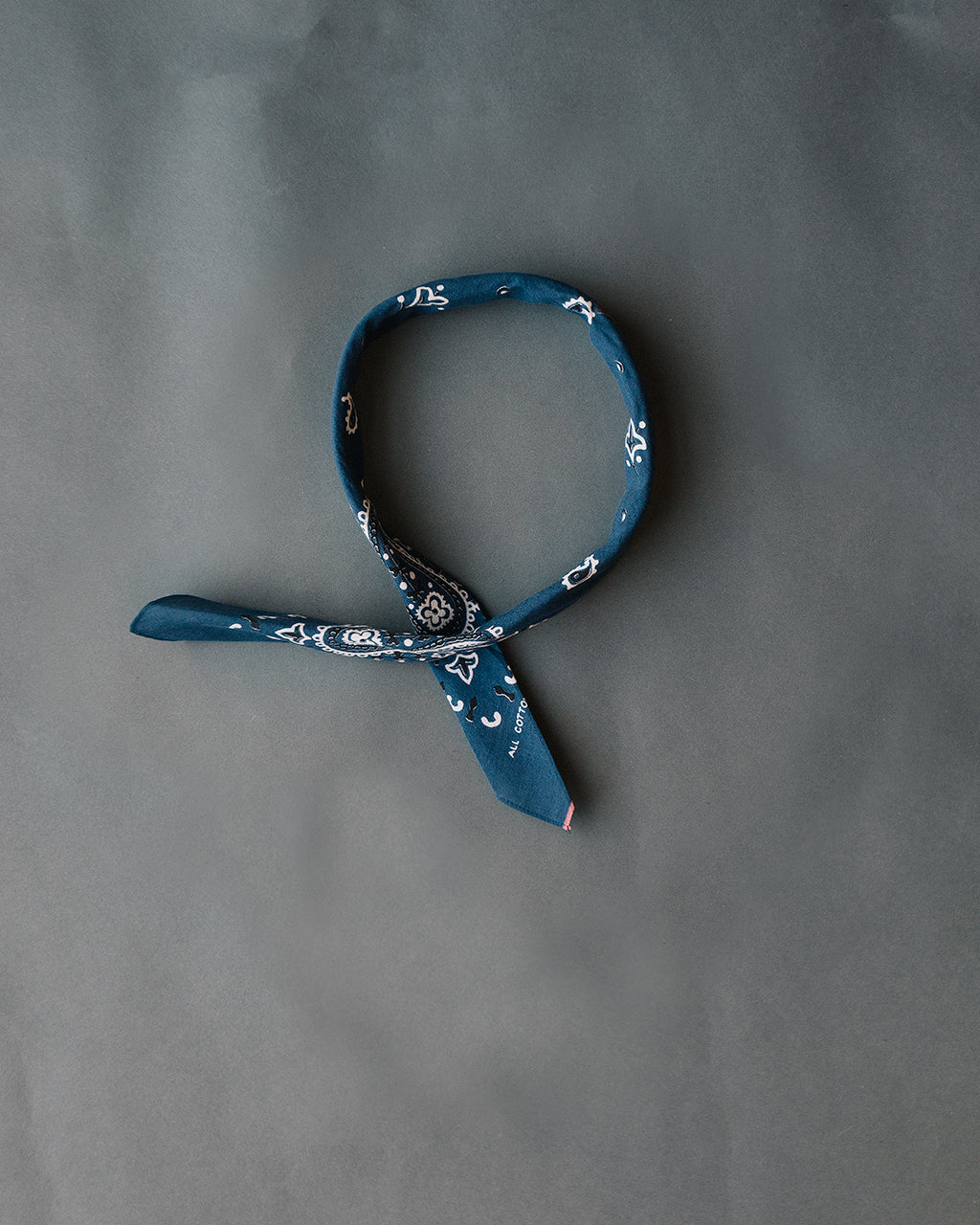
With your bandana pressed to perfection as above, begin to wrap your bandana around your neck, just like you would a tie.
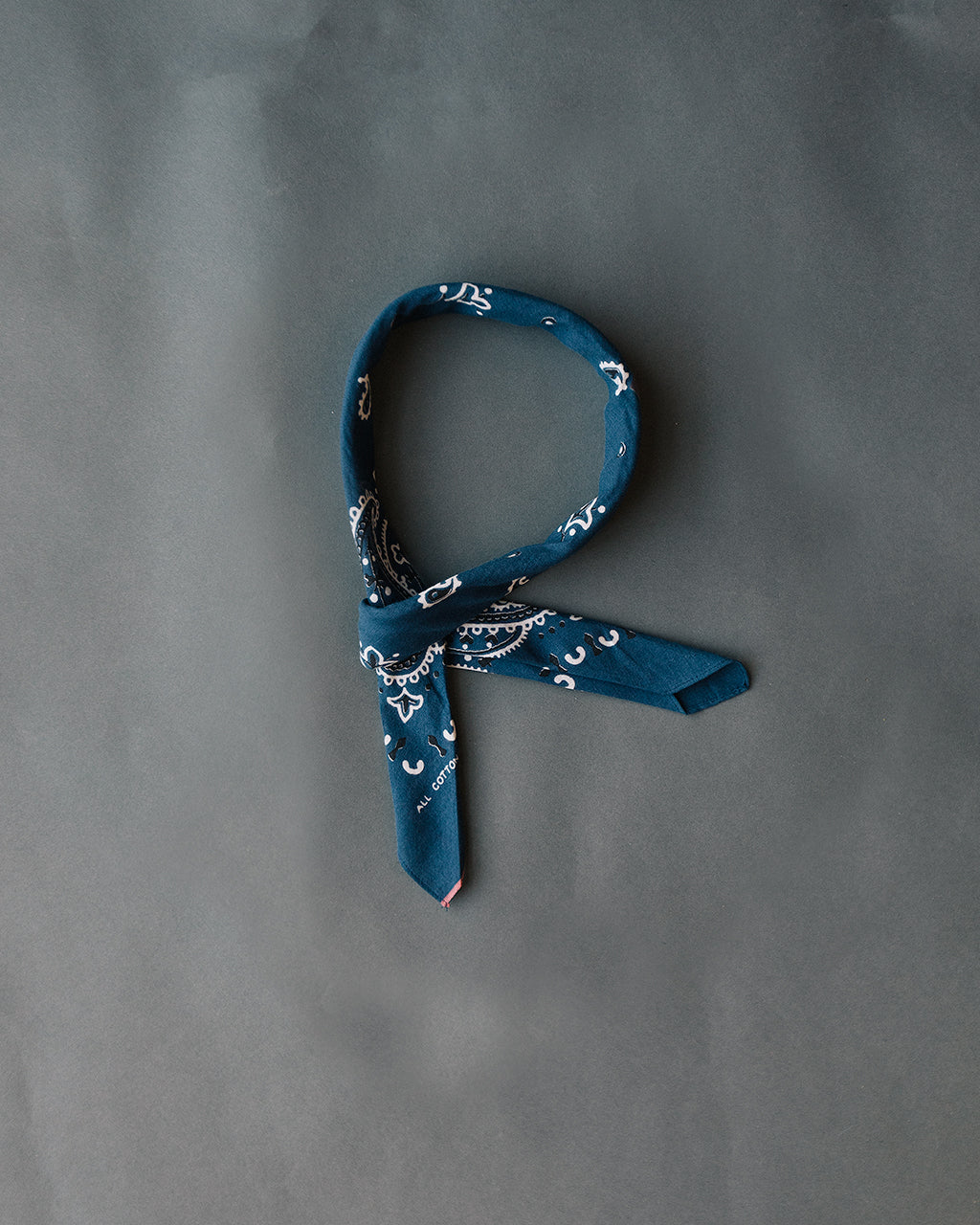
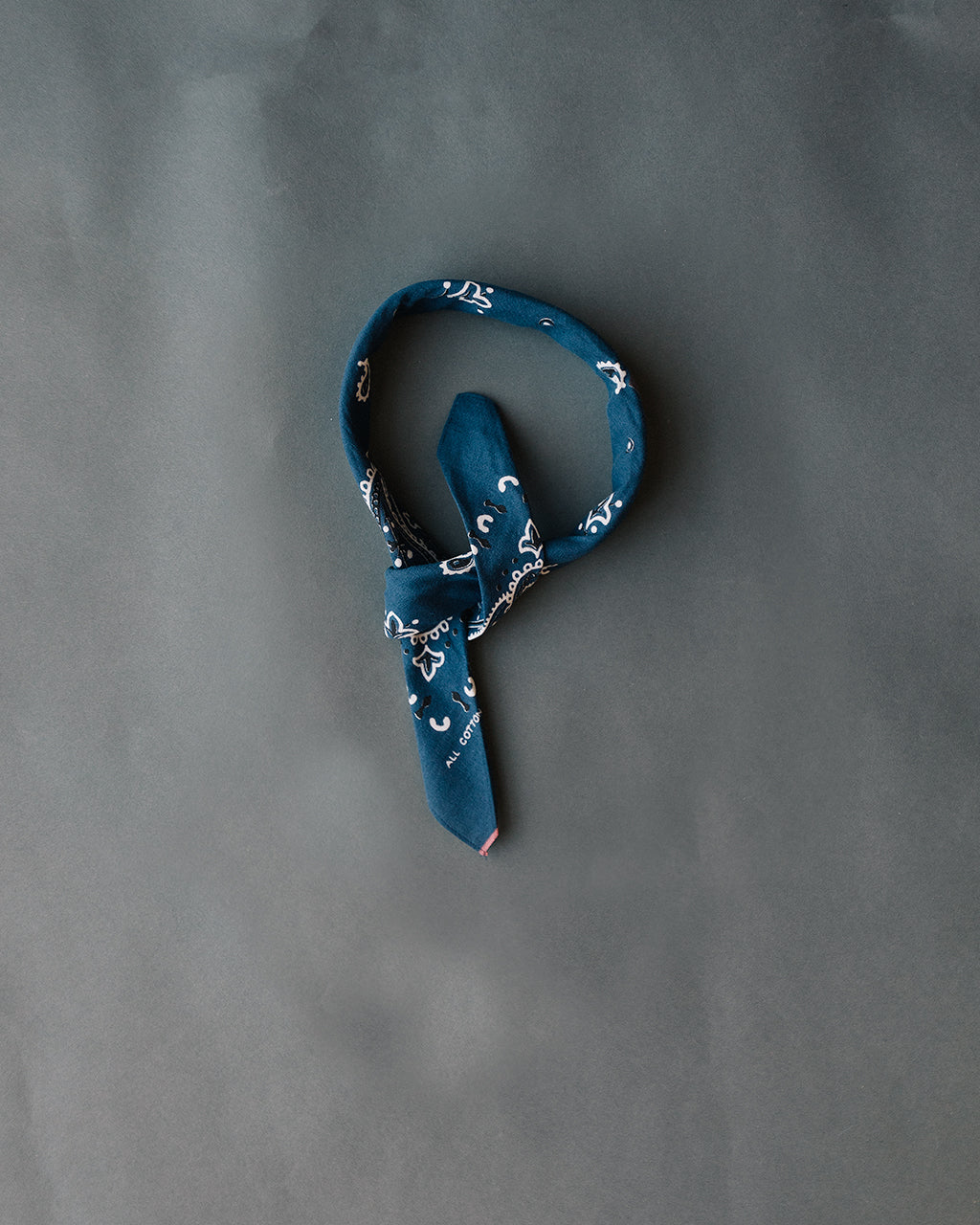
Take one side, go over the top and round the back. Next flip that piece up and slip it in-between the loop you have just created.
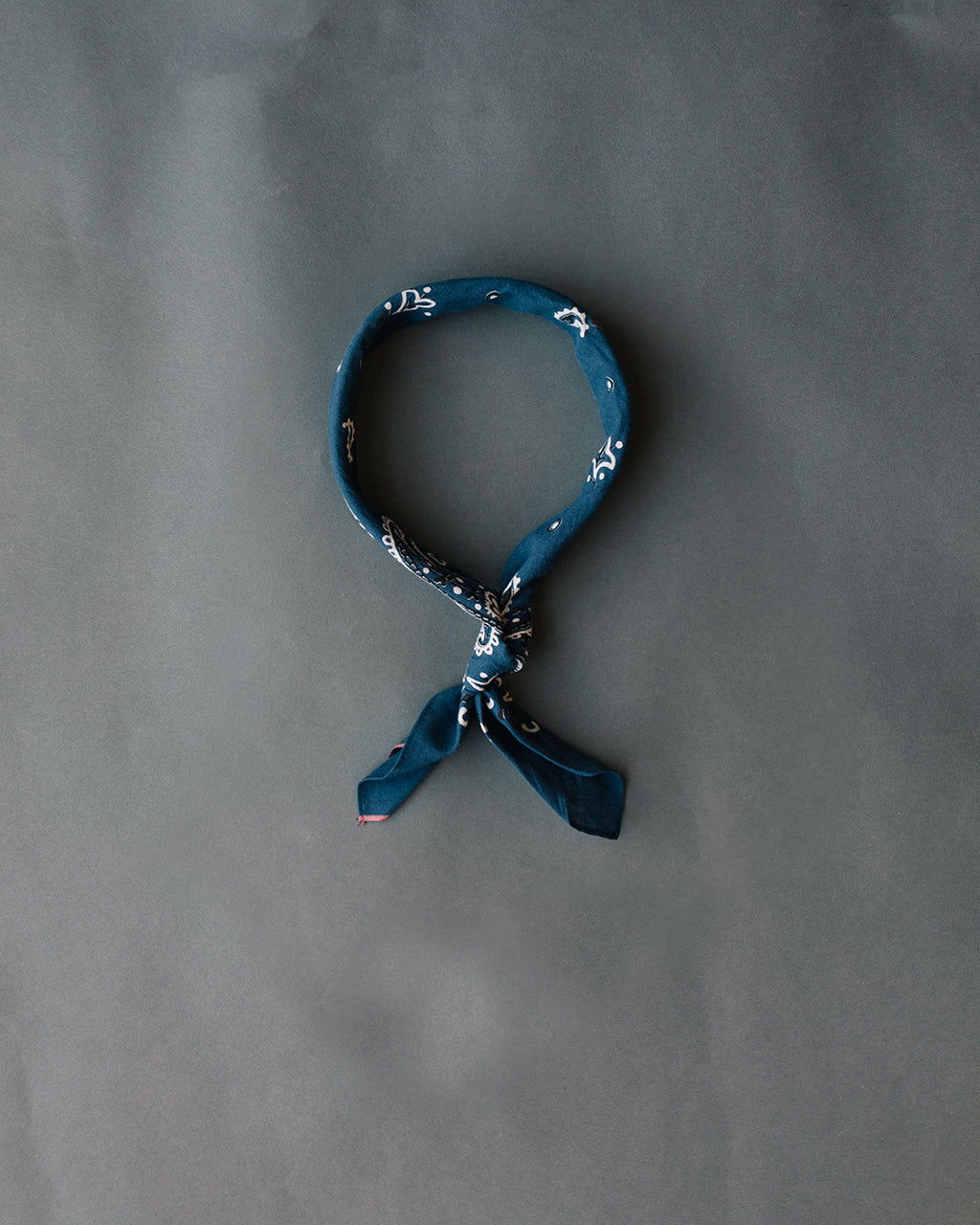
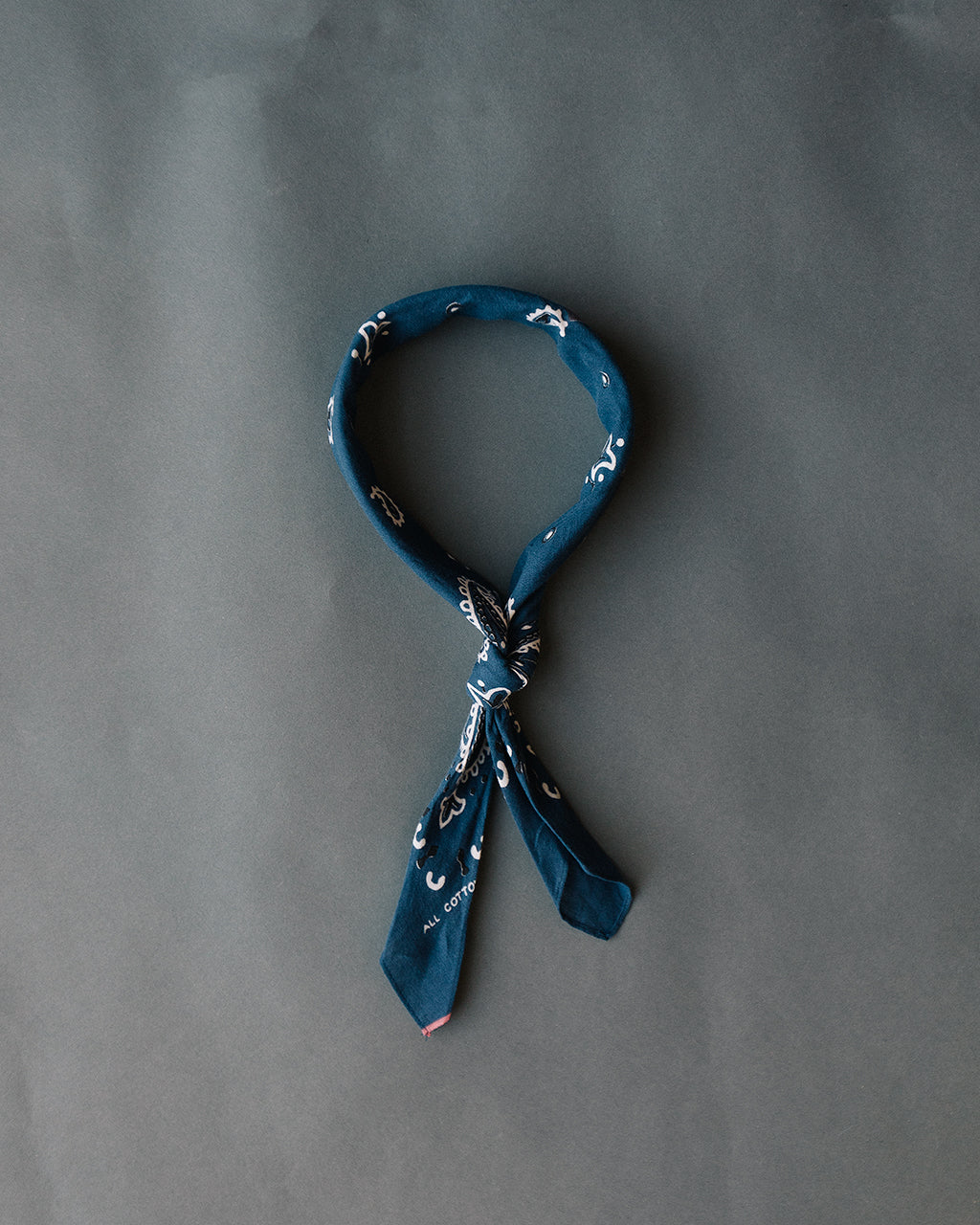
Pull the same side to make the knot as tight as you require, slide the knot up or down to create the right tightness around your neck (not too tight remember!) and flay to ends out to finish off your bandana.
Bandanas are one of the most versatile accessories we carry here at Peggs & son, and can be worn all year round for any occasion.
Shop our collection of bandanas here...
